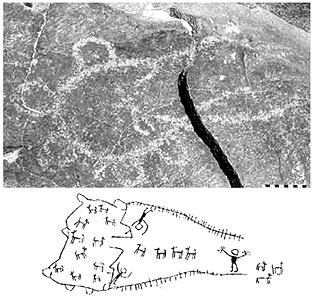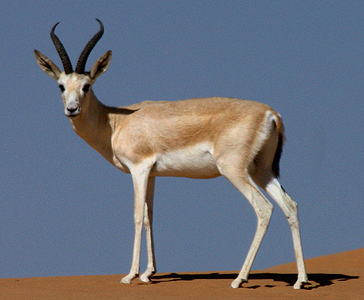
Umm Dabaghiyah


Umm Dabaghiya, a prehistoric late neolithic town site that flourished c. 6200–c. 5750 BCE, is located between the Tigris and Euphrates rivers in Jazira in northern Iraq, c. 100 km ( 62 mi.) south-west of Mosul. It was the earliest known culture in the northern Iraq plain, predating the its descendants, the Hassuna Culture, and was a specialized early ceramic settlement and pioneering trading post. It was contemporary with Çatalhöyük in Anatolia (see pages ). Four levels of occupation were separated by periods of abandonment. Evidence of abundant pottery was found at all four phases, including painted types similar to the later Hassuna pottery.
Archaeological excavations revealed an interesting architecture composed of houses and warehouses. Long buildings, interpreted as communal store houses, consisted of well-built, rectangular rows of small cell-like rooms, each c. 1.5×2.0 m. (5 x 6.5 ft.), with roof opening entrances. Three blocks of these buildings defined the central large open space.
Ordinary houses, composed of one-to-three rooms, had evidence of living rooms, kitchens and storage rooms. Exterior ovens that had chimneys opened into the interior rooms for hearths. Entry to these rooms was also through roof openings.
Because of its hot/dry micro-climate, the town inhabitants had little farming agriculture, but instead they hunted onager, stampeding the herds into enclosures of stakes and nets. Wall paintings found in the residences show onager hunting scenes. The onager hides were traded for plant foods with other farming tribes That trading was the basis of the town's economy, is indicated by found animal remains, 84% of which are made up of two species of wild animals, gazelle and onager. Domesticated sheep, goats, cattle and pigs were also kept.
Elevation is c. 200 m. (650 ft.) above sea level.
Construction: mud brick walls with mud mortar; it is speculated that clay and reed roofing was placed over a wooden support structure.
Sources of data for CG model:
1. Kirkbride, D., 1982; "Umm Dabaghiyah" in Curtis (ed) 1982 50 Years of Mesopotamian Discovery : 11-21



